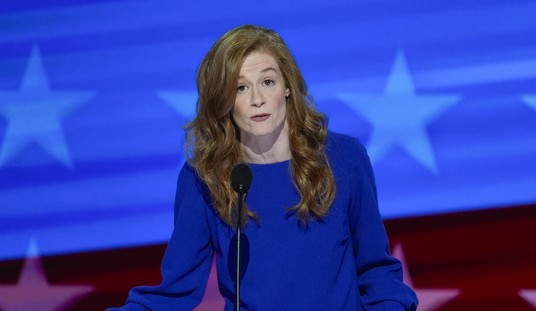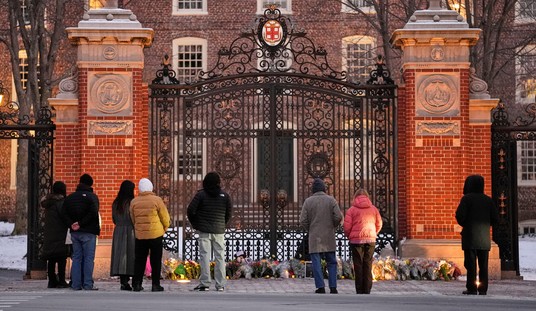
Here we are: the end of the campaigns. We have likely seen our last polls. And yet, they seem unsatisfying. The mood in 2006 and 2010 was clear: the President’s party was going to suffer, and the only question was how much. That’s true today as well, but in some ways this feels more like the eve of the 2002 election in the sense that there remain an awful lot of close races, there seem still to be a lot of undecided voters, and so even though the broad outlines of what will happen are fairly clear, many individual races are likely to keep us in suspense:
-In seven Senate races and nine Governors’ races, the combatants are separated by 2.7 points or less; in four of those races, by less than a point.
-In seven Senate races and twelve Governors’ races, the leader in the polls is below 47%; in six of those races, including both of the head-to-head races in Kansas, no candidate is above 45%. [mc_name name=’Sen. Al Franken (D-MN)’ chamber=’senate’ mcid=’F000457′ ] in 2008 is the only Senate candidate since 2002 to win a race where he was polling below 45% going into the election, but somebody has to win.
Republicans burned by the poll controversies of 2012 remain gunshy about getting out ahead of the polls, when we know that most polls are right most of the time. And yet, the uncertainty is asymmetrical: there remains a lot more upside for Republicans than downside. The polls are not predicting a major GOP wave, and a fairly small ripple in either direction from the current projection is possible. But they are also not ruling out the possibility of a final cascade that makes this a very good election for Republicans indeed.
Overall, the most likely outcome is R+7 (52 seats) or R+8 (53) in the Senate, counting the final results after all runoffs. A few bad poll misses in Alaska, Colorado, and Iowa could still put the GOP short of a majority, but only a small amount of good fortune would put Republicans at R+10 and 55 Senators. And it’s still possible we could see an upside surprise beyond that. My final prediction is R+8. In the Governors’ races, the field is much more wide open, and we could see anywhere from D+5 to R+5; while there’s a lot more guesswork involved here, my final prediction is R+2.
The Senate Races

(These averages don’t include the final PPP polls that just dropped, which have Ernst up 3 in Iowa – since mid-September she’s led in 16 polls compared to 3 for Braley and 6 ties – and otherwise 1 to 2 point Democratic leads in Kansas, New Hampshire and North Carolina and less than a 1 point lead for Perdue in Georgia)
The final Senate scoreboard needs little explanation by this point, as there’s not much else to do besides see the final results to see if the tightening of the Iowa race brings bad news, or the polls prove wrong (as they’d have to be) in Alaska and Colorado. Georgia looks a lot less worrisome than it did even a week ago. Let’s note the trend shift from last week’s polls:

Across the contested races with fresh polling, and even with the ongoing implosion of Terri Lynn Land in Michigan, the races shifted 0.6 points on average in the GOP’s direction (0.8 not counting Michigan), as [mc_name name=’Sen. Mitch McConnell (R-KY)’ chamber=’senate’ mcid=’M000355′ ] and [mc_name name=’Rep. Tom Cotton (R-AR)’ chamber=’house’ mcid=’C001095′ ] seem to be putting their races away at the end, New Hampshire keeps tightening, while momentum in Virginia in particular has accelerated. If I was going to pick one “shocker” race it would be Virginia rather than Minnesota or Illinois or the blowouts in Michigan and Oregon. I’ve argued all along that Ed Gillespie had momentum and would tighten the race but was going to run out of time, and all the rational poll indicators show that’s exactly what’s happened, sort of the way Ken Cuccinnelli made a late run this time last year and came up short. But now and then, elections that have flown under the radar do surprise, there’s nothing else contested in Virginia, and despite his personal popularity [mc_name name=’Sen. Mark Warner (D-VA)’ chamber=’senate’ mcid=’W000805′ ] has been stalled below 50% for a while, and the last few polls (albeit, some of them from rather dubious pollsters) show a tighter race. Gillespie is less of a lightning rod than Cuccinelli, Warner has been engulfed in scandal the last month, and Gillespie has even been making hay on [mc_name name=’Sen. Harry Reid (D-NV)’ chamber=’senate’ mcid=’R000146′ ]’s support for using federal power to change the Washington Redksins’ name (a deeply unpopular cause in Northern Virginia). The other possible outside surprise is the thinly-polled race in New Mexico, where the GOP is running off with the Governor’s race. My point is not that these races are all that likely to end closer than a 7 or 8 point GOP loss, but simply that if there’s some polling error and a big break of the last deciding voters towards the GOP, you could see some big surprises – whereas there really is not all that much likeihood of any races that are that lopsided in the polls going the other way. For completeness, here’s the rest of the Senate races; New Jersey has slipped into this tier (I threw Delaware into the big chart in its place, although that race shows no sign of being competitive; I also left off Alabama, where [mc_name name=’Sen. Jeff Sessions (R-AL)’ chamber=’senate’ mcid=’S001141′ ] is running unopposed) – as with the Governor’s races, there are more truly safe Republican Senators than Democratic ones:

Notice that Lindsay Graham runs ten points behind [mc_name name=’Sen. Tim Scott (R-SC)’ chamber=’senate’ mcid=’S001184′ ] and – like [mc_name name=’Sen. Thad Cochran (R-MS)’ chamber=’senate’ mcid=’C000567′ ] – struggles to get close to 50% in the polls, but nonetheless has a huge lead.
Which brings us to the three races in which Republicans trail but have a more realistic shot to surprise – Kansas, North Carolina and New Hampshire. The polling trend in the Kansas Senate race screams “we don’t like these candidates, can you please send us some new ones?”

Ironically, if Sam Brownback was in this race and [mc_name name=’Sen. Pat Roberts (R-KS)’ chamber=’senate’ mcid=’R000307′ ] was in the Governor’s race, you get the sense that both would be winning comfortably. The combination of (1) a huge number of undecideds in both races, (2) Kansas’ historic partisan tilt to the GOP, and (3) the President’s abysmal job approval with Kansas voters (36.4% approve, 58.6% disapprove) suggests good reason to think a lot of grumpy Republican voters will come home on Election Day. But if they come in a “throw the bums out” mood, both Roberts and Brownback could face the same fate. I suspect that Roberts stands a slightly better chance of survival of the two, since it’s easier for voters to rationalize giving the other side the statehouse than a 6-year Senate term.
Speaking of approval ratings, let’s take a look at the states where RCP has computed an average:

Unsurprisingly, you’ll see that states with a large black population (Virginia, Georgia, North Carolina) look less grisly in terms of Obama’s job approval (especially his disapproval) than states like New Hampshire, Iowa and Colorado. But in any event, the Senate races have played out in the polls fairly consistently with the view that both Sean Trende and I have argued for over the past few months: that Obama’s low approval ratings would exercise a gravitational pull on Democratic candidates, especially in Senate races. Now, we’ll get to see if that polling trend plays out at the ballot box.
[UPDATE: One thing that’s too easily overlooked is the interplay between Governor and Senate races in the same state. Ernst in Iowa, for example, may benefit from being one of the few Republicans in a tight Senate race where the GOP Governor is blowing out his opponent. In Colorado, for all the talk about how the electorate compares to 2010, nobody seems to be discussing the fact that this time, the GOP has a real candidate for Governor and isn’t de facto running the garishly divisive Tom Tancredo]
In North Carolina, with both candidates still far from 50% and a lot of uncertainty about the Libertarian candidate’s poll support, there’s been a big push to overanalyze the demographics of the early voting data. I remain skeptical that we can learn much from early voting (Nate Silver, on Twitter the other day, made the same point – we just don’t have enough track record to draw predictive conclusions from early vote data). And in any event, in making comparisons that assume Republicans need the 2010 electorate to win and are doomed by something more like the 2012 electorate, it’s worth remembering that 2010 was a very good year for the GOP in North Carolina: [mc_name name=’Sen. Richard Burr (R-NC)’ chamber=’senate’ mcid=’B001135′ ] won 55% of the vote and his Senate race by 12 points, the GOP won 54% of the popular vote in House races, and the party took control of the state legislature for the first time since Reconstruction. There’s a good-size margin for error in missing 2010 level turnout. Even in 2012, Mitt Romney won the state by 2 points and Pat McCrory won 55% in the Governor’s race (GOP House candidates got 49% of the vote). So, demographic analogies are not everything. The polls still say this is [mc_name name=’Sen. Kay Hagan (D-NC)’ chamber=’senate’ mcid=’H001049′ ]’s race by only slightly more than a tossup, and that’s where it stays until the votes come in.
In New Hampshire, last week saw a tale of two poll universes, as both WMUR/UNH and Rasmussen bucked the tightening trend to show [mc_name name=’Sen. Jeanne Shaheen (D-NH)’ chamber=’senate’ mcid=’S001181′ ] up 7 points, while both New England College and ARG had Scott Brown up slightly. That presented a puzzle, because NEC was the best pollster in New Hampshire in the 2012 Presidential race:

Meanwhile, almost all of New Hampshire’s pollsters except WMUR/UNH got the Governor’s race all wrong in 2012:

However, WMUR/UNH – which had also had Maggie Hassan up 15 in the Governor’s race – abruptly reversed course with another poll out this morning that had Shaheen and Hassan with 1-point leads, a whiplash-inducing result that leaves Rasmussen out on a limb by itself. And it’s worth noting that Shaheen has underperformed her polls in both her prior Senate runs, underperforming her poll share of the 2-party vote by 1.6 and 1.9 points, in two very different polling environments (2002 and 2008):

You would think, given that New Hampshire is a small, compact, demographically and geographically homogenous state that’s infested with presidential pollsters every four years, it would be about the easiest place in the country to poll, and yet the track record of polling there has been pretty poor in recent years. Shaheen, like Hagan, should be regarded as the favorite, but it requires nearly no imagination to see her going down to a very narrow defeat.
How Accurate Are Final Senate Polls?
Let me offer here a quick summary of a topic I discussed in my last Senate race analysis, which I won’t spin out at length here: how often are the Senate polls wrong?
I went back through my 2002-2012 Senate race dataset to look at how the final poll averages have fared compared to the final election results. Focusing only on the races that were reasonably close (the leader was at or below 54% of the two-party vote in the Election Day RCP average), I broke the races into three charts. First, the races where the polls underestimated the “wave” party, i.e., the party that (like the GOP this year) had the national environment working in its favor:

Second, the races where the polls were more or less on the money:

Third, the races where the polls overestimated the “wave” party:

The final chart zeroes in on the races where the leader was below 52% of the 2-party vote, the closest races:

Here’s my conclusions:
-Out of 46 close races, the poll averages called the outcome in 35 and missed in 11. In the closest races, they went 12-10; in the others, 23-1. (The only miss of the non-closest races was the Heitkamp-Berg race in North Dakota in 2012).
Out of this sample, the “wave” party won 34 races and lost 12 – 18-4 in the closest races, 16-8 in the others. In the tightest races, the wind at your back is a big help. The four losers were all Republicans – Sharron Angle, Ken Buck and Dino Rossi in 2010 and [mc_name name=’Sen. John Thune (R-SD)’ chamber=’senate’ mcid=’T000250′ ] in 2002.
Overall, the 2-party vote diverged by at least 1 point in the “wave” party’s direction in 24 races, against it in 11, and within 1 point of target in 11. Of the closest races, there were 12 of these poll misses in the wave direction, 5 in the opposite direction, 5 on target; in the rest, 12-6-6. So, races that are extremely close are not really any more or less likely to end up off the target than less competitive races, it’s just that those are the ones where 1 point can make the difference.
Of the 24 “misses with the wave,” 17 were Democrats, 7 Republicans. Of the 11 “misses against the wave,” 9 were Democrats, 2 Republicans. In the closest races, the misses were:
6 Democrats with the wave
6 Republicans with the wave
4 Democrats against the wave
1 Republican against the wave
In the less-close races:
11 Democrats with the wave
1 Republican with the wave
5 Democrats against the wave
1 Republican against the wave
So, poll misses are much more likely to favor the Democrat, as I noted last time, but that tendency has been less pronounced in the very closest races, even despite the broader trend in which Democrats have dominated the very closest races.
What is concerning about Colorado and Alaksa this year (and to some extent South Dakota, although that race does not look close) is when you look at the geography and party of the 11 races the poll averages got wrong:
Democrats beating the polls against the wave in Nevada and Colorado (2010) and South Dakota (2002)
Democrats beating the polls with the wave in North Dakota and Montana (2012) and Minnesota (2008)
Republicans beating the polls with the wave in Alaska and Florida (2004), Colorado, Minnesota and Georgia (2002)
Besides the known issue of Democrats flying under the radar with Hispanic voters in Nevada and Colorado and Native Americans in the Dakotas and possibly Alaksa, this suggests that the Democratic ground game may matter more generally in sparsely populated states.
The Governors

It’s sweatin’ time for a bunch of Republican incumbent Governors – Rick Scott, Sam Brownback, Sean Parnell and Paul LePage, while Tom Corbett (the only incumbent in any race whose opponent is over 50%) has had over a year to work on his concession speech:

But for all that peril, assuming the polls are on target, if a little under two-thirds of the final voters break for the GOP, we could suddenly be dealing with a net gain of 6 Governorships. That seems a stretch, and races like Maryland (which wasn’t even in play in the polls a week ago), Rhode Island and maybe even Minnesota are only slightly less of a stretch than the Virginia Senate seat. And remember, the polls underestimated the Democrats in several Governor’s races in 2010 in Connecticut and Illinois (where Pat Quinn was toast in the polls at this point and won), 2012 in New Hampshire, and 2006 in Maryland. Minnesota is the least likely of these, since the Senate race there looks dead as well and Republicans may be less fired up to vote (Bob Ehrlich in Maryland in 2006, similarly, may have been dragged down by Michael Steele’s loss in the Senate race that year). The last week’s trend, which like the Senate trend is yet again positive overall, has been encouraging in New Hampshire and Maryland, both of which remain tantalizingly close, but has seen a sudden reversal in favor of Dan Malloy in Connecticut and against Brownback in Kansas:

Meanwhile, the uncompetitive races remain that way:

I remain convinced of the possibility that the 2014 elections will validate in a very large sense the salience of the poor national environment for Democrats. But with the Democrats’ superiority in operations, Republicans overextended in the Governors’ races, a few underachieving Senate candidates, and residual uncertainty about the polls being off at the margins, there is still plenty of suspense, and plenty of reason for Republican and conservative activists across the country to take nothing for granted.













Join the conversation as a VIP Member